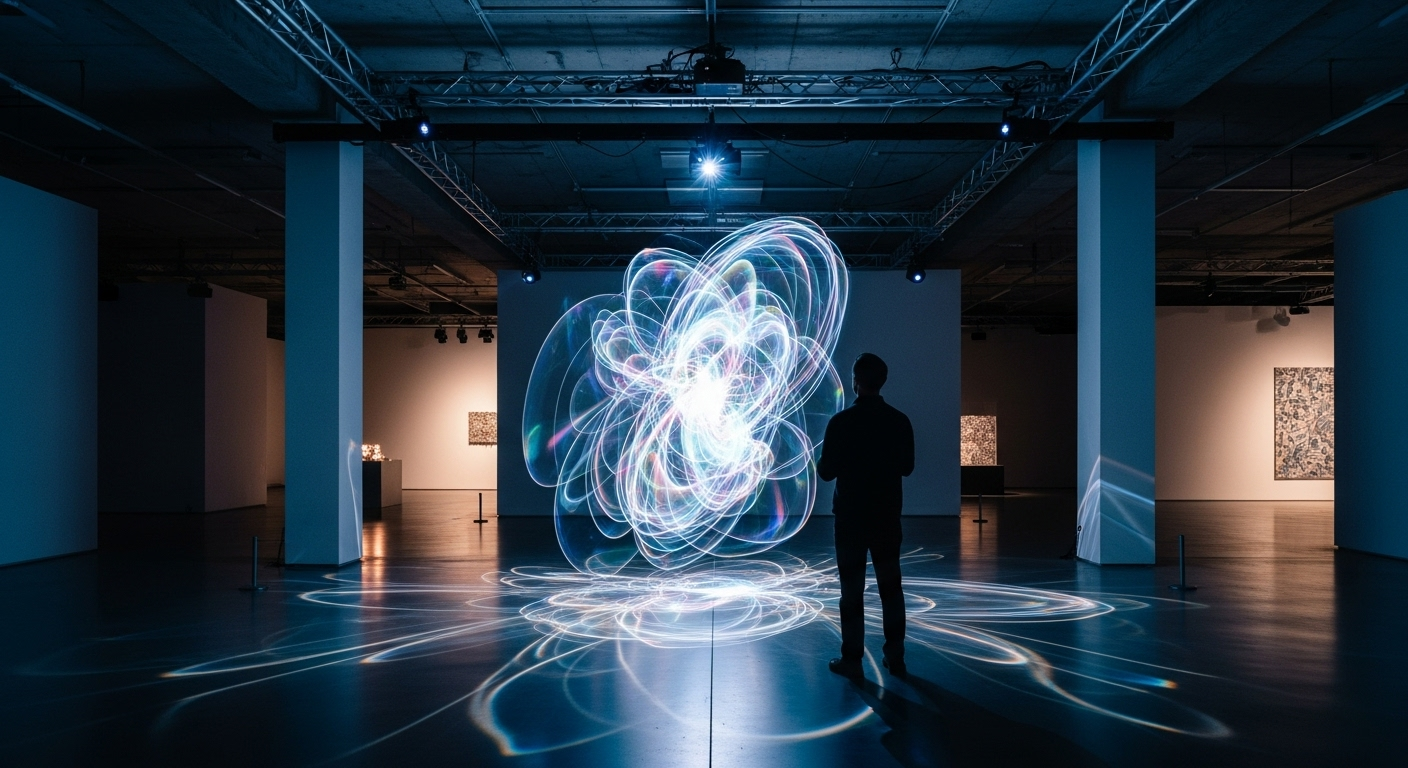Holographic Art: Redefining the Gallery Experience
In the ever-evolving landscape of contemporary art, a groundbreaking medium is capturing the imagination of artists and audiences alike. Holographic art, once relegated to the realm of science fiction, has emerged as a powerful tool for creative expression, blurring the lines between reality and illusion. This cutting-edge form of artistic innovation is transforming galleries, challenging traditional notions of space and perception, and offering viewers an immersive experience unlike any other. As holographic technology continues to advance, artists are pushing the boundaries of what's possible, creating stunning visual spectacles that defy the laws of physics and redefine our understanding of art itself.

Advancements in Holographic Technology
Recent years have seen dramatic improvements in holographic technology, driven by advancements in laser systems, computer processing power, and display technologies. Modern holographic artists now have access to a wide array of tools and techniques, from digital holography to volumetric displays. The development of large-scale holographic projection systems has enabled artists to create room-sized installations, transforming entire spaces into immersive holographic environments. These technological leaps have not only expanded the scope of what’s possible in holographic art but have also made the medium more accessible to a broader range of artists.
Holographic Art in the Gallery Space
The introduction of holographic art into traditional gallery settings has sparked a revolution in exhibition design. Curators and artists are rethinking the concept of the white cube, creating dynamic spaces that respond to and interact with holographic works. Galleries are investing in specialized lighting and projection systems to accommodate these pieces, while some institutions are dedicated entirely to holographic exhibitions. The result is a new kind of art experience that engages viewers on multiple sensory levels, challenging them to question their perception of reality and their relationship to the artwork.
Notable Holographic Artists and Works
A new generation of artists is pushing the boundaries of holographic art, creating works that range from intimate personal narratives to large-scale public installations. Japanese artist Hiro Yamagata’s Quantum Field X3 transformed the exterior of the Guggenheim Museum Bilbao into a shimmering holographic canvas, while British artist Chris Levine’s portrait of Queen Elizabeth II, Lightness of Being, offered a haunting, three-dimensional perspective on one of the world’s most photographed individuals. Other artists like Matthew Schreiber and Shu Lea Cheang are exploring the intersection of holography with other media, creating hybrid works that defy easy categorization.
The Future of Holographic Art
As holographic technology continues to evolve, the possibilities for artistic expression seem limitless. Researchers are developing new techniques for creating interactive holographic displays, allowing viewers to manipulate and interact with holographic artworks in real-time. The integration of artificial intelligence and machine learning algorithms promises to create dynamic, ever-changing holographic installations that respond to their environment and audience. Some visionaries even predict a future where holographic art breaks free from the confines of galleries and museums, becoming an integral part of our everyday visual landscape.
Challenges and Controversies
Despite its growing popularity, holographic art faces several challenges. The high cost of equipment and specialized knowledge required can be barriers to entry for many artists. There are also ongoing debates about the nature of authenticity and originality in holographic works, particularly as digital techniques become more prevalent. Some critics argue that the wow factor of holographic technology can overshadow artistic substance, leading to works that prioritize spectacle over meaning. These discussions are shaping the discourse around holographic art and influencing its development as a mature artistic medium.
Holographic Art’s Impact on Other Creative Fields
The influence of holographic art extends beyond the gallery walls, inspiring innovations in fields such as theater, music, and fashion. Holographic technology is being used to create stunning stage designs for concerts and theatrical productions, bringing new dimensions to live performances. In the fashion world, designers are experimenting with holographic fabrics and accessories, creating garments that shift and change before the viewer’s eyes. These cross-pollinations are fostering new collaborations between artists, technologists, and creatives from diverse disciplines, driving further innovation in holographic art and its applications.




